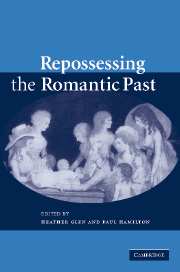Book contents
- Frontmatter
- Contents
- Notes on contributors
- Introduction
- PART I DISSENT AND OPPOSITION
- PART II REOPENING THE CASE OF EDGEWORTH
- PART III DIFFERENT DIRECTIONS
- 8 Coleridge's stamina
- 9 Elizabeth Hamilton's Translation of the Letters of a Hindoo Rajah and Romantic orientalism
- 10 Jane Austen and the professional wife
- 11 High instincts and real presences: two Romantic responses to the death of Beauty
- Marilyn Butler: a bibliography
- Index
10 - Jane Austen and the professional wife
Published online by Cambridge University Press: 15 December 2009
- Frontmatter
- Contents
- Notes on contributors
- Introduction
- PART I DISSENT AND OPPOSITION
- PART II REOPENING THE CASE OF EDGEWORTH
- PART III DIFFERENT DIRECTIONS
- 8 Coleridge's stamina
- 9 Elizabeth Hamilton's Translation of the Letters of a Hindoo Rajah and Romantic orientalism
- 10 Jane Austen and the professional wife
- 11 High instincts and real presences: two Romantic responses to the death of Beauty
- Marilyn Butler: a bibliography
- Index
Summary
The early cultural image of Jane Austen was crafted in large part by her nephew J. E. Austen-Leigh in his A Memoir of Jane Austen (1870). He composed his work when he was in his seventies and far removed both from his ‘dear Aunt Jane’ – she had died over half a century before – and from her historical time. While her letters depicted a woman embedded in her era; acutely aware of intellectual and cultural trends; visitor to Bath, London, Southampton, and Godmersham; and patron of circulating libraries and art galleries, Austen-Leigh's Jane Austen was a retiring Victorian lady rooted in a quiet and picturesque country village. She lived in ‘entire seclusion from the literary world’ and was ‘always very careful not to meddle with matters which she did not thoroughly understand … She never touched upon politics, law, or medicine’, he wrote.
In Jane Austen and the War of Ideas (1975) Marilyn Butler taught us how absurd this statement was in relation to politics and helped inaugurate a period of intense interest in Austen as social commentator, concerned with the presumed masculine spheres of state politics and the professions. In the present chapter I want to follow this route using contemporary writing about the professions to shed light on Austen's texts. At the same time I recognize that the emphasis is itself a response to the Austen-Leigh tradition of depoliticizing Austen and can be a source of only one of the numerous approaches to the novels.
- Type
- Chapter
- Information
- Repossessing the Romantic Past , pp. 203 - 225Publisher: Cambridge University PressPrint publication year: 2006

